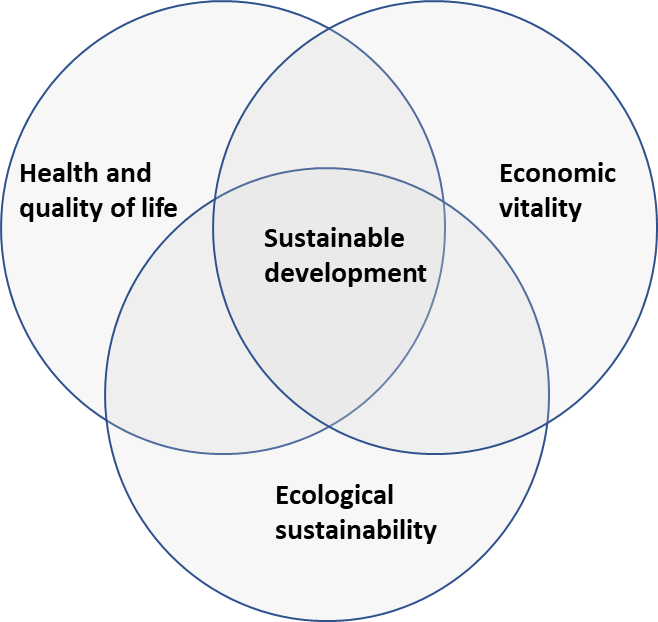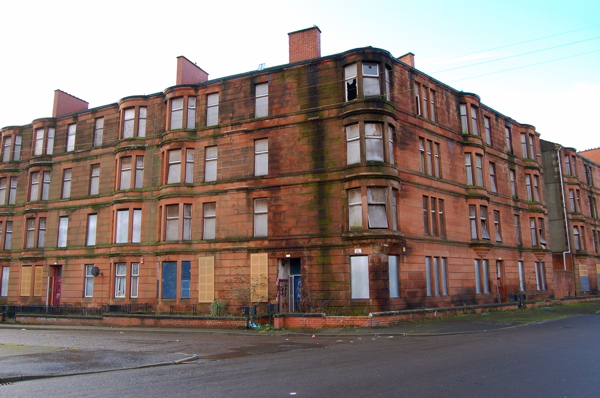Glasgow’s East End Local Development Strategy: a case study of sustainable spatial strategy
“Sustainable development is development which meets the needs of the present generation without compromising the ability of future generations to meet their own needs” (WCED 1987). The diagram below shows how sustainable development is characterised by three interlinked elements: Health and wellbeing, Ecological sustainability, and Economic vitality.

Figure 1. The sustainable development trefoil.
In my last blog I considered the link between ecological sustainability and health by suggesting effective green infrastructure is essential for improving the health and wellbeing of communities. In this blog I want to focus on that link again, but this blog examines how that link can be integrated within a regeneration strategy which aims to achieve health and wellbeing goals alongside wider goals such as creating jobs and developing infrastructure.
Over the last 15-20 years Glasgow City Council has been leading a process to develop a strong long-term strategy for the regeneration of 626 hectares of land lying to the east of the city centre. In 2008 the council created the East End Local Development Strategy (GCC 2008) as an example of how wider health issues can be addressed by creating an integrated spatial framework for development.
The strategy is informed by ecological principles, incorporating links between spatial and built elements such as space/land needs and layout, with environmental elements such as microclimate, drainage and air quality. The central aim of the policy is to create a sustainable city district which benefits the economic and social health and wellbeing of its inhabitants whilst minimising its impacts on the surrounding environment.
It is an ambitious attempt to transform a former industrial heartland, once a patchwork of vacant sites, transport corridors and rundown housing into a modern city district, equipped with better opportunities for work, recreation, health and wellbeing.

Figure 2. Victorian sandstone tenements in Ardenlea Street in Dalmarnock, originally renovated as part of the GEAR (Glasgow East Area Renewal) scheme in the late 1970s, but had their residents systematically rehoused, which led them to fall into a dilapidated state once more.
The underlying ethos of the strategy has been to set sights high and the key messages the strategy hopes to demonstrate are:
- Investment in good urban design can add financial value to a place.
- Well designed places deliver environmental and social benefits.
- Poorly designed places are likely to incur higher costs to individuals and society in the long run.
As a part of its commitment to measuring the impact of good urban design on health, Glasgow City Council commissioned the Glasgow Centre for Population Health to carry out a health impact assessment of the draft strategy in 2007 (Ison 2007). The outcomes of the health impact assessment helped knit the strategy more closely to health of the area’s inhabitants.
This joining up of human habitat to health and the environment is evidence that an ecological approach to urban design, an approach which integrates spatial strategies with policies for water management, green spaces and sustainable transport networks, can have significant impacts in tackling health inequalities in urban areas. The East End Local Development Strategy is now seen as a nationally important example of social, economic and environmentally integrated urban policy by the Scottish Government.

Figure 3. Glasgow’s Athletes Village in Dalmarnock, built in 2014. The development is well supported by greenspace which offers drainage capacity and contributes to an improved movement network.
References:
Glasgow City Council, 2008. ‘Changing Places: Changing Lives – East End Local Development Strategy’
Ison. E., 2007. Health impact assessment (HIA) of the draft East End local development strategy entitled ‘Changing places: changing lives’
WCED, S.W.S., 1987. World commission on environment and development. Our common future, 17(1), pp.1-91.


